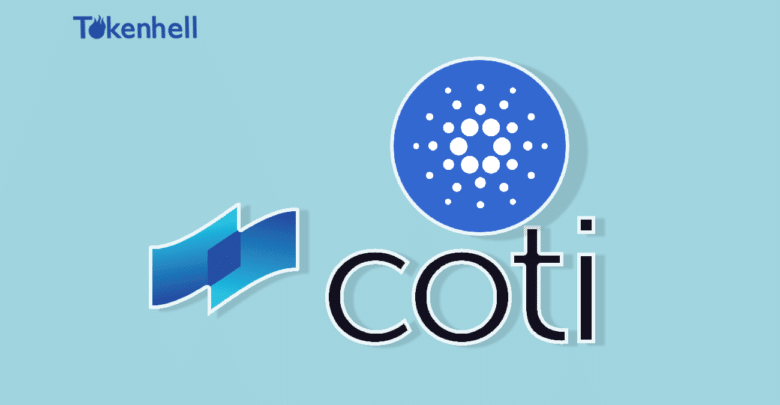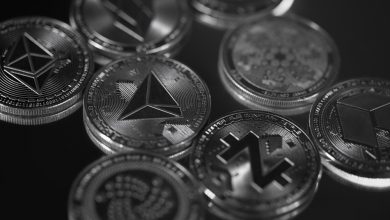
The world of decentralization has seen a lot since the integration of the whole thing with blockchain technology. It has generally become easier to transact your money from one place to another without having to conform to all the different protocols out there set up by the conventional world of finance.
You don’t have to share any particular details about yourself, such as your location, the kind of money that you are transacting, and all that, and you would still be able to send your money via a decentralized source. Decentralization simply means that no one authority, state, country, or enterprise has any control over how the money gets transacted, who are these people that are transacting the money to begin with, and any other particular information is strictly kept secret in all its glory.
There have been multiple cryptocurrencies around different times, such as the flagship cryptocurrency Bitcoin; after that, it was Ether, the leading cryptocurrency that has supported the idea of smart contracts and non-fungible tokens, and then there are a lot of altcoins such as XRP, Binance token, and many others. The real problem that the end-user of the dynamic crypto world is seeing at the moment is not the limited availability of options to choose from but not being able to use this decentralized service at a particularly lower fee.
COTI is it blockchain entity that has recently started its operation, and it aims to provide people with secure, fast, and efficient blockchain transactions with the lowest possible fee. Although you are dealing with multiple parties in a peer to peer fashion, you still require an intermediary to do so; in your case, it might be a crypto exchange or some other broker which are going to ask for this particular piece for the role that they have been playing facilitating a transaction between you and the final party.
COTI aims to completely destabilize this thing by removing intermediaries and empowering the end-user to not only transact their money or crypto without the need to shake hands with an intermediary or pay their fees but also develop their own particular payment solutions that are catered to their fine needs.
Introduction to COTI
COTI works as a layer-1 financial tech blockchain system that has been designed primarily to hold any and all kinds of payments that can be made from the network. You can not only send and receive money in the form of crypto but can also deploy a payment system if need be for your own business needs.
COTI is a decentralized financial network that is presently eyeing the troubles of both the decentralized and the centralized world, and it has successfully done so by introducing a new protocol by the name of DAG; it proposes an infrastructure that is extremely efficient, private, cost-effective, interoperable but at the same time scalable according to the very needs and requirements of the business.
The consensus mechanism used by the platform is also quite different as it uses a proof of trust consensus algorithm for the sake of verifying and validating transactions taking place in real-time. This consensus algorithm is a careful blend of the proof of work and the DAG itself.
Working Mechanism of COTI Network
To be able to better understand the products and services the platform offers, you need to have a more in-depth analysis of how the network itself works. The primary focus of the network is to propose an elegant financial system that can take on the challenges proposed by both decentralized and centralized worlds. It will be a whole system in itself, with no need to import stuff or even integrations from other blockchain systems for the development of the apps or whatever when you can find whatever you are looking for within the network itself. From the layer 1 systems to the decentralized apps and from the smart contracts to the execution and development of the NFT trades, each and everything will be present on the network, which will definitely cross off the need to go off-network or for the sake of trying out other blockchain systems.
Bitcoin, along with Ether, proposes an incredibly complex challenge in the form of scalability. The whole process of validating the transactions and then subjecting the data validated into the dedicated blocks is not only complex but, at times, far-fetched. This hurts the ability of the network to hold multiple transactions at the same time, and hence it has to reduce the overall number of users the network can facilitate at a given time period, thus hurting its scalability gravely.
You would be amazed or even shocked to know that the largest blockchain network on the planet, bitcoin, has only a throughput of facilitating 20 transactions in a single second. This value is nowhere near what is actually required of the network, given the overall size of the transactions that the network has to carry or the requests that it receives around the clock.
The transaction first needs to be sorted properly, which means that the miner has to authenticate the source of the transaction and has to verify if the transaction in itself comes from a credible source or not. And if it does, then other miners would have to run the same diagnostics as proposed by the primary miner to cross-check that everything is indeed in order. After all of that is said and done, the transaction is allotted into a particular block; it can take hours, seconds, or even days at times which is truly frustrating and hurts the scalability of the crypto community in general.
COTI network in itself is built on the layer-1 blockchain network by the name of Trustchain while having a direct acyclic graph (DAG) data structure. This allows the network in question to not only considerably lower the transaction fee but at the same time be able to increase the present throughput of the network all the way to 100K transactions taking place in a single second.
Proof of Trust Consensus Algorithm
It is the combination of the proof of work and the trust chain, which is a DAG-oriented data structure, and both of these, in harmony, give rise to the proof of trust consensus algorithm. The DAG developed for the COTI is known as the cluster. It works as a distributed ledger technology for the sake of recording all the transactions that are taking place on the network of COTI, for that matter. Transactions are not readily converted and transformed into the blocks from the get-go; instead, these are gathered in a linear fashion, forming a bead-like structure, arranging themselves over the network one after the other.
For every new transaction that needs to be validated and acknowledged by the network, the system needs to link this new transaction to at least two other transactions that took place before this one. These are not the transactions that literally took place before the transaction in question, so what specific transactions are taken by the system? This whole thing takes place in a pretty arbitrary fashion, which means that any particular transaction can as well be chosen for the task.
A general deciding factor here is the trust score of the transactions; the higher, the better. This score is calculated by the historical behaviour of the transaction as well as bringing the payment statistics for the said transactions into the account. If the trust score is higher, then not only does the transaction gets selected for validation, but the transaction fee would also be considerably lower. This means that the transactions with a rather bad or strained trust score will get picked later, and they have to pay a huge transaction fee as compared to those that are simply not.
As soon as the data for a transaction comes into the COTI network, when a user submits the request, two different nodes are assigned to the user for the sake of validating their transaction. These validating nodes must have a similar trust score or the source selection algorithm, the system in charge of making this transition will choose other nodes for this purpose and vice versa.
This helps the system to fend off some load and generally complete the transaction for the trusted users in a much quicker and more efficient way. These transactions often get completed in parallel, which means that a sense of scalability could be achieved here while at the same time strengthening the overall security of the network to tackle any and all hacking attempts and breaches of data onboard.
The proof of work consensus algorithm doesn’t work here as you would have proposed it does in other domains or crypto networks out there. The very way these transactions are validated and subjected to the blocks doesn’t require any kind of mining activity at all to achieve consensus and trust. The only use of the proof of work consensus algorithm is to lend the COTI network consistent protection from any and all spamming attempts that the network might be vulnerable to while at the same time incentivizing all the participants of the network.
By completing these various proof of work tasks, the validators are able to singlehandedly attach their transactions to the cluster. This is just an assumption; it doesn’t mean in any potential way that the validators would actually be able to do so. Relatively all of it depends on the overall trust score that these validators carry. These trust scores are used for the sake of influencing the proof of work levels, which in turn influence the transaction fee level allotted to a particular domain. There is absolutely no mining activity required for the transactions to be completed and subjected into blocks in real-time; this is one of the reasons why the COTI network can continue to operate at extremely economical transaction fees.
Coin Issuance Service by COTI
Suppose you were thinking that the COTI is only going to deal with the processing of the transactions and their validation in real-time, then think again because this crypto network is providing tons of other services that were unheard of earlier. You can utilize the infrastructure of the COTI network for the sake of developing your own stablecoins, crypto tokens, non-fungible tokens, and other such decentralized instances carrying your own terms of use and conduct.
You don’t have to abide by the policies and rules set by the standard cryptocurrencies and their setting towards the issuance of these tokens, because you are delegating the whole process on a private chain and are indulging in the matter with your money and time; you have the complete liberty to dictate the terms that you prefer. You would be met with lower transaction fees if you wish to go forward with this approach, and this is something that not only you but your end-users can enjoy too.
Your infrastructure will be extremely scalable, which means that you can build on it when the time comes, or you can reduce its efficiency and reach if you are not meeting with a huge influx of users, to begin with. This gets you thinking about the technical support that will be required for various jobs? Would you have to arrange for that when the time comes? Well, you will be glad to know that this is not going to be the case at all. The COTI team is going to take care of each and everything for you. Not only you, as the service provider can, mint tokens, but users and clients from your end will have the liberty to do the same. So, in itself, it is not a third-party system but an extremely outsourced solution for all of your crypto problems.
What is a COTI Token?
The COTI is the native token of the COTI network, and it works as an ERC-20 token allowing you to use this token not only as a utility but also as a governance token. This token is just like many other similar tokens proposed and launched by different cryptocurrencies and networks, but the one thing that is amazingly unique about this token is its ability to be used in staking and earning amazing returns on the original investment to the user for the tokens that they have chipped in, why?
Because there is absolutely no mining taking place on the network, which means that a huge chunk of the profit is not paid off to the miners as the incentive, and the profit that you earn through staking your tokens over the network belongs solely to you.
The proof of work mechanism, as mentioned above, is not there to secure the network in its entirety but to provide enough financial shield so that the network can fend off those annoying spamming attacks that many crypto networks out there continue to receive. COTI’s whole infrastructure at the moment is being distributed along three different mainnets, and that includes the Ether chain, Trust chain, and the BNB chain as well. The Trust chain works as the mainnet of the COTI network, all the core processing of data and management of the tasks take place over here.
As for the whole working of the COTI token, it is bound to take place on the Ether’s mainnet, party because of the reason that it is an ERC-20 token that we are talking about there, and Ether has all the potential supply to accommodate the complete working of such a token but also provide with technical assistance wherever required. Other than being hosted over at the Ether, the COTI token is also being traded on multi crypto exchanges out there, which means that you can easily get your hands on the token in the necessary volume whenever you want to. BNB chain also hosts multiple arrays of the COTI network and is working with other mainnets to provide all the security and computational power it requires for its efficient day-to-day operation.
Being a COTI token holder, you have the ability to stake your token over the main network for the sake of earning handsome rewards in terms of profit that is gathered for the staking of your token after a particular period of time has passed, exclusive access to community events and other products whether introductory or already running whenever these are made available. The governance-oriented aspects of the COTI token have not been made available at the moment, but that doesn’t mean that in the future, the network is not going to facilitate it one way or the other.
Does it mean that it is prime time to be able to accommodate as many COTI tokens as you can get your hands on? It primarily depends on your knowledge of the crypto space and, coming from a financial point of view, your ability to discern if it is a great financial opportunity that you should be pursuing. COTI network definitely has a huge potential when it comes to its growth, and over time the overall userbase is also going to steadily increase along with the products and services that the network shall offer.
Tokenhell produces content exposure for over 5,000 crypto companies and you can be one of them too! Contact at info@tokenhell.com if you have any questions. Cryptocurrencies are highly volatile, conduct your own research before making any investment decisions. Some of the posts on this website are guest posts or paid posts that are not written by Tokenhell authors (namely Crypto Cable , Sponsored Articles and Press Release content) and the views expressed in these types of posts do not reflect the views of this website. Tokenhell is not responsible for the content, accuracy, quality, advertising, products or any other content or banners (ad space) posted on the site. Read full terms and conditions / disclaimer.







